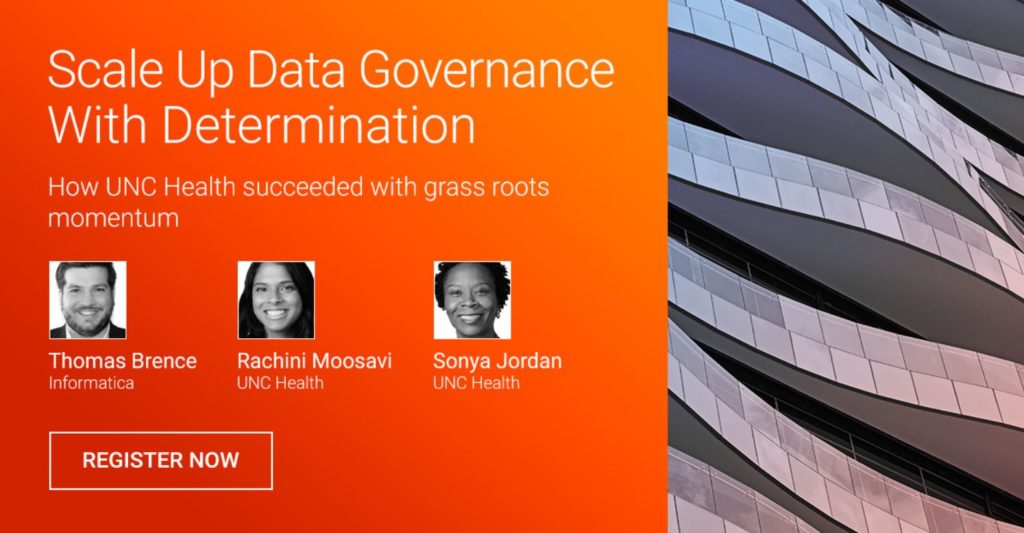A Passion for Better Data Governance
For a considerable number of individuals, data governance is a project of passion. These are the people who find their calling and dedicate their lives and their careers so they can consistently improve the quality of data to deliver real business value. They are the true believers in what trusted data can do for a project, a line of business, or an entire organization. Sadly, that same attitude is not equally shared by everyone: for those folks, governance still feels like “government,” and represents things like regulation, rules, and frustrating red tape. Unfortunately for these people, governance doesn’t offer a sense of collaboration, but rather enforces the notion of control. And so, they resist change: Line of business owners push back in the name of progress. Executives push back in the name of inefficiency.
For the average person, that can be a lot to overcome. But if you’re one of those who has the passion, when you feel resistance? You push forward. Find yourself in a barren landscape? You nurture and leverage grassroots. And when you encounter roadblocks? You look for a way in, and try to find any crack in the wall.

Without question, it definitely can be challenging to maintain focus, keep your momentum, and stoke the desire to see your program through to success. Then, out of nowhere, a project or bucket of initiatives will start to emerge, projects that require trusted data. Executives and business leads will begin to see the need and look to the governance team to help showcase the value to others. And this was the case at UNC Health. The data governance team, featuring Rachini Moosavi and Sonya Jordan, were able to identify a key project to support, demonstrate success, and fuel momentum. Coming up later this month, we’ll be featuring their story in a webinar as part of the Data Empowerment Experts Series. As we do with every Data Empowerment Expert, we sat down with the team ahead of time for a short question and answer session.
Question: How do you choose where to start?
Answer: For the initial launch of UNC Health’s Data Governance program, executive buy-in was critical. However, our executive sponsorship was limited to approval to start a program and budget to staff the office. As a result of our limited executive support, we spent time implementing grassroots data governance projects which included, researching best practices, understanding UNC Health culture, and taking on smaller initiatives (e.g., usage of Referrals data) that would demonstrate program progress. A year into the operations of the Governance Office, a compelling event that enabled data governance to have an enterprise-wide purpose presented itself. UNC Health’s migration to a virtualized enterprise data warehouse (EDW) was a significant initiative, with 13 sub-teams focused on both data architecture/technical needs and data governance principles. Within a year, we were able to integrate data governance into the fabric of the EDW, demonstrate the importance of knowledge management, documentation, lineage, and begin our first Data Governance Council. We understood that starting a data governance program in an organization like ours, that doesn’t fully embrace a top-down culture, would have to look different. Thus, our program began and evolved differently than best practices dictate. Nonetheless, we’re excited about the progress we’ve made and the journey we’re on.
Question: How do you maintain momentum?
Answer: The key to our success is remaining open to opportunities and working with the best data governance service partner to help guide our tool development. Without executive sponsorship setting the direction and embracing the purpose of data governance, we have to continuously look for opportunities to partner with the Analytics Community and improve our organization through analytics, data governance, and data-driven insights. Each unexpected event, like COVID-19, can present organizational opportunities to improve. While there remains a substantial amount of work with the Stewardship Committee, Data Governance Council, and evolution of our data governance tools, we also have to be present to the needs that make our work pertinent to stakeholders. Just like the COVID-19 pandemic has made analytics and data governance a necessity today, there will be other unplanned events down the road that we will need to be ready to engage in and involve our Council and stakeholders. A commitment to continuous improvement and being open to opportunities is how UNC Health remains pertinent and necessary every day.
Question: How do you address scale?
Answer: Our health system has embraced a Community-model for analytics. Community-model means we are neither decentralized nor centralized in the analytics organization. We leverage the great talent we have embedded in operational/clinical areas, as well as centralized analytics talent in IT and Enterprise Analytics, to address the data-centric needs of the organization. Our new focus on community involves the creation of The Analytics Community Planning Committee, Neighborhoods for domain and tool-specific interest groups, and establishing greater developer accessibility to the EDW and Data Governance tools. We also have aligned analytics prioritization and investments through a single intake queue and a defined analytics governance model.
Question: How do you measure success?
Answer: The program’s success is measured qualitatively through building relationships and quantitatively by use of a maturity model. From the conception of the program, we have purposefully worked to build solid relationships as we rolled out components of the program. Our stakeholders have been our greatest champions, the vehicles for program success, and each association has been invaluable. In 2018, we adopted and personalized to UNC Health a commonly used maturity model, Capability Maturity Model Integration (CMMI), developed by the Carnegie Mellon University, and made it a part of the way we work. We use the characteristics (Levels 1-5) defined within the model as a quantitative way to gauge our program and project success. There are several platforms we used to showcase data governance work: Analytics Governance, Data Governance Committees, The Analytics Community, Quarterly Business Reviews (QBR), and Roadshows. We also present at Data Governance conferences as often as possible, so that we can share our progress and learn from others.
Question: How has data privacy been a factor?
Answer: Data privacy is a big part of Analytics at any health care delivery organization. At UNC Health, Data Governance partners with Privacy, Legal, IT, Information Security, and Research to address ongoing and new data access, security, and privacy concerns via a committee.
Question: How do you empower the business to drive value?
Answer: The first step was to make our EDW governed, which builds trust, transparency, and accessibility to the data foundation. After that, we have focused on getting consistent communication, which entails building upon the capabilities of our Data Governance tools. As of recently, we’ve spent a lot of time ensuring that all the new enterprise dashboards for COVID are documented, certified, and available in our data governance tools. Our tool has enabled a central repository to track and share information across the various teams needing to use the same data effectively. Considering that value is both perceived and quantifiable, we use our Analytics Community, Neighborhoods/User Groups, Committees, and other means of reaching stakeholders to drive perceived value. As for quantifiable value, we measure the annual number of certified analytical assets and the maturity model to track value creation.
As with all of our Data Empowerment Expert Series webinars, you can learn more at www.informatica.com/dataexperts
To hear directly from Rachini and Sonya on UNC Health’s data governance journey, join us on Tuesday, June 30, 2020, 10am PDT.









